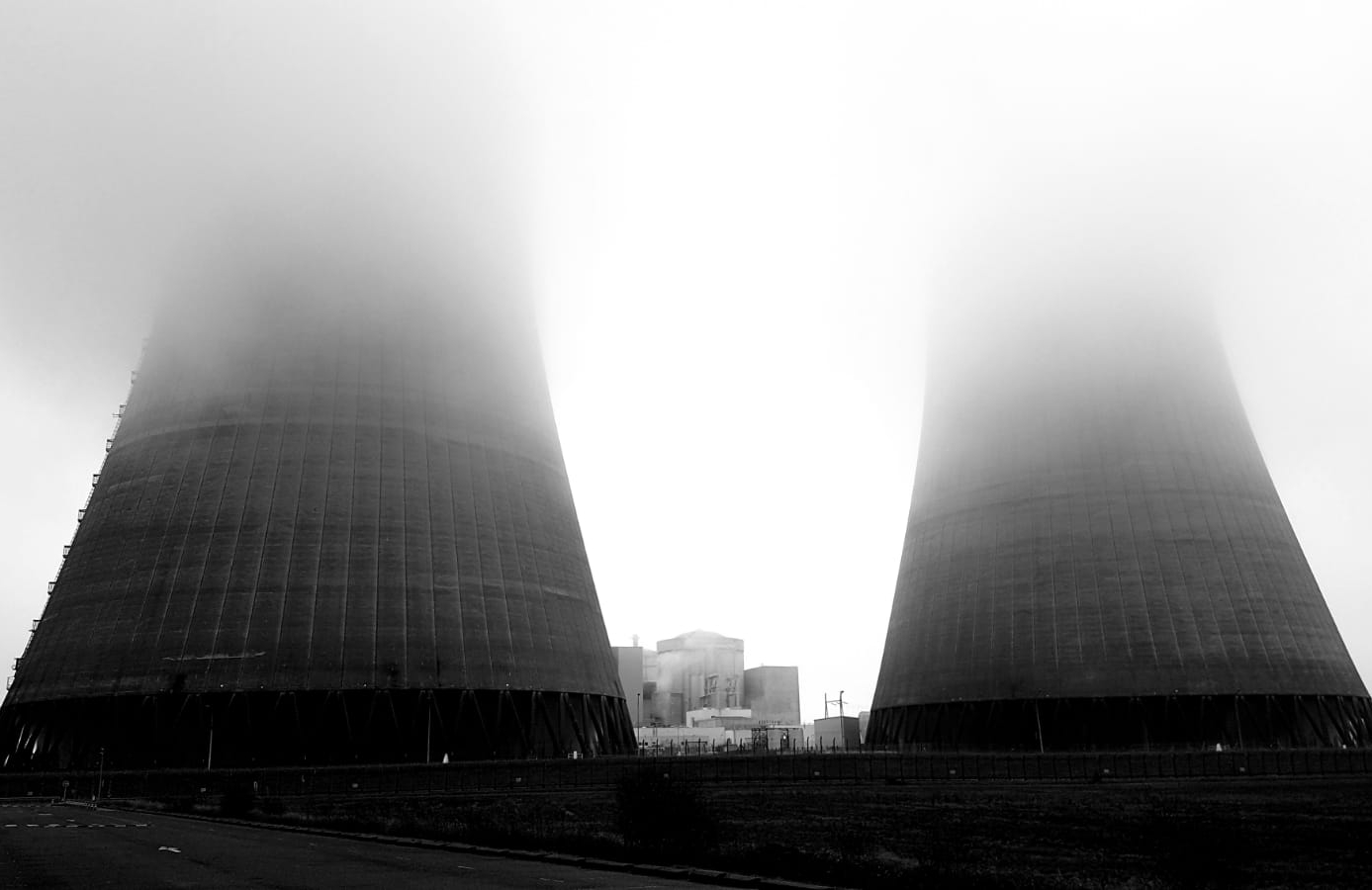MOx Strategy and the future of French nuclear plants
Nicolas Thiollière, a researcher in nuclear physics at IMT Atlantique, and his team are assessing various possibilities for the future of France’s nuclear power plants. They seek to answer the following questions: how can the quantity of plutonium in circulation in the nuclear cycle be reduced? What impacts will the choice of fuel — specifically MOx — have on nuclear plants? To answer to these questions, they are using a computer simulator that models different scenarios: CLASS (Core Library for Advanced Scenario Simulation).
Today, the future of French nuclear power plants remains uncertain. Many reactors are coming to the end of their roughly forty-year lifespan. New proof of concept trials must be carried out to extend their duration of use. In his quest to determine which options are viable, Nicolas Thiollière, a researcher at IMT Atlantique with the Subatech laboratory, and his team are conducting nuclear scenario studies. In this context, they are working to assess future options for France’s nuclear power plants.
Understanding the nuclear fuel cycle
The nuclear fuel cycle encompasses all the steps in the nuclear energy process, from uranium mining to managing the radioactive waste. UOx fuel, which stands for uranium oxide, represents roughly 90% of the fuel used in the 58 pressurized water reactors in French nuclear power plants. It consists of uranium enriched in uranium 235. After a complete cycle, i.e. after it has passed through the reactor, the radiation generates approximately 4% fission products (matter used to produce energy), 1% plutonium and 0.1% minor actinides. In most countries, these components are not recycled; this is referred to as an open cycle.
However, France has adopted a partially closed cycle, in which the plutonium is reused. Therefore, the plutonium is not considered waste, despite being the element with the highest radiotoxicity. In other words, it is the most hazardous of the nuclear cycle materials in the medium-to-long-term, for thousands to millions of years. France has a plutonium recycling system based on MOx fuel, which stands for “mixed oxide”. “MOx is fuel that consists of 5% to 8% plutonium produced during the UOx combustion cycle and supplemented by the depleted uranium,” Nicolas Thiollière explains.
The use of this new mixed fissile material helps slightly reduce the consumption of uranium resources. In the nuclear power plants in France, MOx fuel represents approximately 10% of total fuel—the rest is UOx fuel. After a MOx irradiation cycle, 3% to 5% of the remaining plutonium is not considered waste and could theoretically be reused. In practice, however, it currently is not reused. MOx fuel must therefore be stored for processing, forming a strategic reserve of plutonium. “We estimate that there were approximately 350 tons of plutonium in the French nuclear cycle in 2018. The majority is located in used UOx and MOx fuel,” explains Nicolas Thiollière. Thanks to their simulations, the researchers estimate that with an open cycle—without recycling using MOx —there would be approximately 16% more plutonium in 2020 than is currently projected with a closed cycle.
The fast neutron reactor strategy
In the current pressurized water reactors, the natural uranium must first be enriched. 8 mass units of natural uranium are needed to produce 1 unit of enriched uranium. In the reactor, only 4% of the fuel’s mass undergoes fission and produces energy. Directly or indirectly fissioning the entire mass of the natural uranium would result in resource gains by a factor 20. In practice, this involves multi-recycling the plutonium produced by the neutron absorption of uranium during irradiation to continuously incinerate it. One of the possible industrial solutions is the use of Fast Neutron Reactors (FNR). FNRs rely on the use of fast neutrons that offer the advantage of fissioning the plutonium more effectively, thus enabling it to be recycled several times.
Historically, the development of MOx fuel was part of a long-term industrial plan based on multi-recycling the plutonium used in FNRs. Now, a completely different story is in the making. Although three FNRs were used in France beginning in the 1960s (Rapsodie, Phénix and Superphénix), the permanent suspension decision for Superphénix by the Council of State in 1997 signaled the end of the expansion of FNRs in France. The three pioneer reactors were shut down, and no FNRs have been operated since. However, the Act of 2006 on the sustainable development of radioactive materials and waste revitalized the project by setting a goal for commissioning an FNR prototype by 2020. The ASTRID project, led by the CEA (The French Alternative Energies and Atomic Energy Commission), took shape.
Recently, funding for this reactor with its pre-industrial power level (approximately 600 megawatts compared to 1 gigawatt for an industrial reactor) has been scaled down. The power of the ASTRID concept, significantly reduced to 100 megawatts, redefines its status and will probably extend the industrial development potential of FNRs beyond 2080. “Without the perspective of deploying FNRs, the MOx strategy is called into question. The industrial processing of plutonium is a cumbersome and expensive process resulting in limited gains in terms of the inventory and resource if the MOx is only used in the current reactors,” Nicolas Thiollière observes.
In this context of uncertainty regarding the deployment of FNRs and as plutonium accumulates in the cycle, Nicolas Thiollière and his team are asking a big question. Under what circumstances can nuclear power plants multi-recycle (recycle more than once) plutonium using the current reactors and technology to stabilize inventory? In practice, major research and development efforts would be required to define a new type of fuel assembly compatible with multi-recycling. “Many theoretical studies have already been carried out by nuclear industry operators, revealing a few possibilities to explore,” the researcher explains.
Nuclear scenario studies: simulating different courses of action for nuclear power plants
Baptiste Mouginot and Baptiste Leniau, former researchers with Subatech laboratory, developed the cycle simulator CLASS (Core Library for Advanced Scenarios Simulations) from 2012 to 2016. This modeling tool can scientifically assess future strategies for the fuel cycle. It can therefore be used to calculate and monitor the inventory and flow of materials over time for all nuclear plant units (fuel fabrication and separation factories, power stations, etc.) based on hypotheses for developing factories and the installed nuclear capacity.
In the context of her PhD work, supervised by Nicolas Thiollière, Fanny Courtin studied the objective of stabilizing the quantity of plutonium recycled in the reactors of nuclear plants by 2100. One of the constraints in the simulation was that all the power plant reactors needed to use the current pressurized water technology. Based on this criterion, the CLASS tool carried out thousands of simulations to identify possible strategies. “The condition for stabilizing the quantity of plutonium and minor actinides would be to have 40 to 50% of the pressurized water reactors dedicated to the multi-recycling of plutonium,” Nicolas Thiollière explains. “However, the availability of plutonium in these scenarios would also mean a regular decrease in the nuclear capacity, to a level between 0 to 40% of the current capacity.” This effect is caused by minor actinides, which are not recycled and therefore build up. The plants must therefore incinerate plutonium to stabilize the overall inventory. However, incinerating plutonium implies reducing the power plants’ capacity at an equivalent rate.
On these charts, each line represents a possible course of action. In purple, the researchers indicated the scenarios that would meet a mass stabilization condition for the plutonium and minor actinides in circulation (top). These scenarios imply reducing the thermal energy of the power plants over the course of the century (bottom).
The researchers also tested the condition of minimizing the inventory of plutonium and minor actinides. In addition to increasing the number of reactors used for multi-recycling, the researchers showed that the scenario for reducing the quantity of plutonium and minor actinides in the cycle would imply phasing out nuclear power in a few years. Reducing the stock of plutonium is tantamount to reducing the fuel inventory, which would mean no longer having enough to supply all the nuclear power plants. “Imagine you have 100 units of plutonium to supply 10 power plants. At the end of the cycle, you would only have 80 units remaining and would only be able to supply 8 plants. You would have to close 2. In recycling the 80 units, you would have even less in the output, etc.,” Nicolas Thiollière summarizes. In practice, it therefore seems impractical to implement major R&D efforts to recycle MOx without FNRs, considering that this solution implies abandoning the technology in the short term.
The industrial feasibility of these options must first be validated by extensive safety studies. However, in the initial stages, the scenarios involving the stabilization of plutonium and minor actinides seem compatible with diversifying France’s electricity mix and rolling out renewable energy to replace nuclear sources. Industrial feasibility studies looking at both safety issues and costs are all the more valuable in considering the uncertainty involved in deploying fast neutron reactors and the future of the nuclear sector. It is important to address the uncertainty of these economic and safety issues before deploying a strategy that would radically change France’s nuclear power plants.
Also read on I’MTech: What nuclear risk governance exists in France?
Article written for I’MTech (in French) by Anaïs Culot





Leave a Reply
Want to join the discussion?Feel free to contribute!